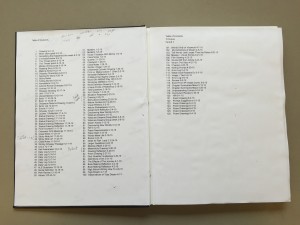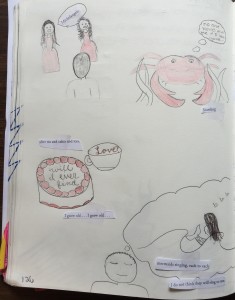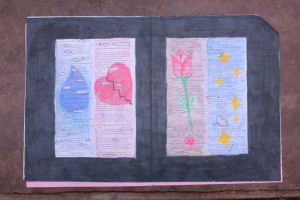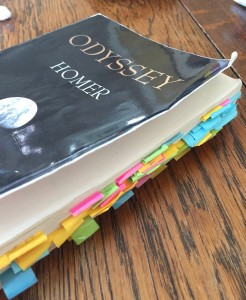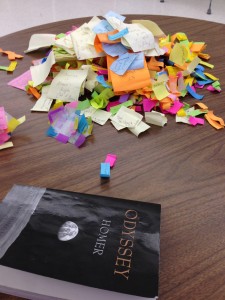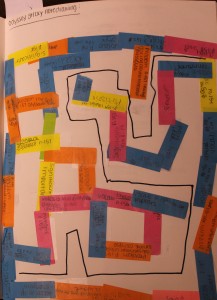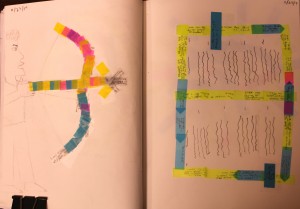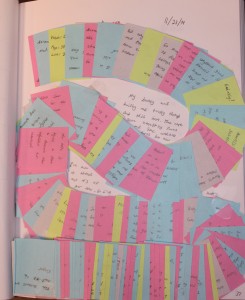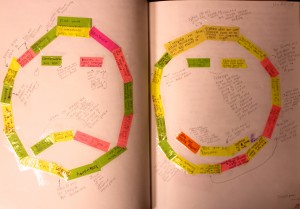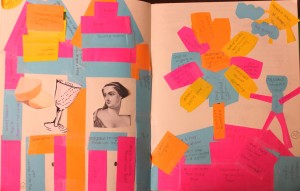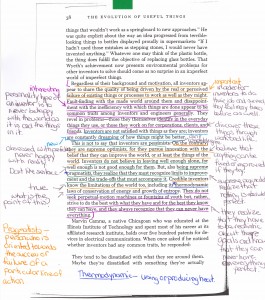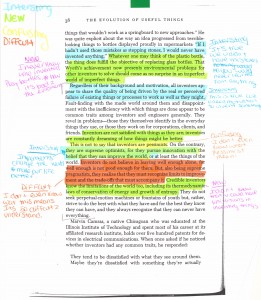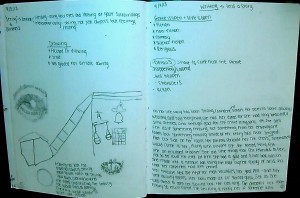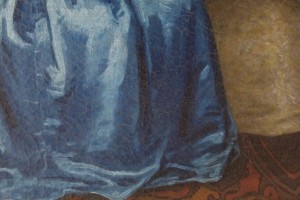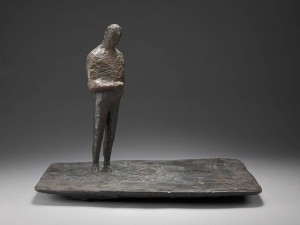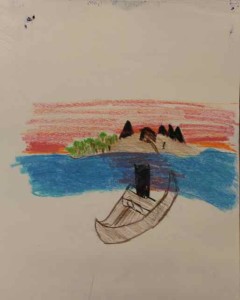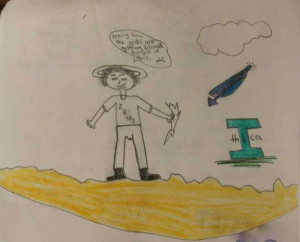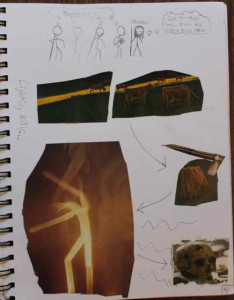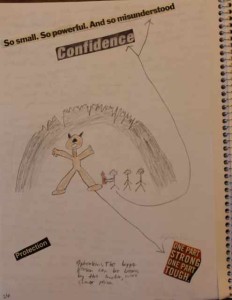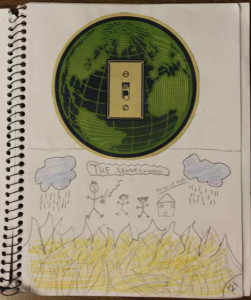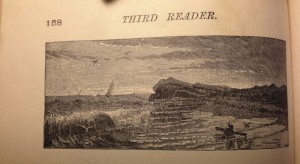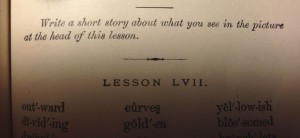“…those who fail to re-read, are obliged to read the same story everywhere” (Barthes, S/Z 16)
As we end the year I give students an opportunity to revise, add, re-work, any aspect of their journal work from the semester. And I give credit for any additional authentic work they add. All I ask is they explain what they added, where, and why. This practice gives us both an opportunity for reflection and re-reading.
When we start journals at the beginning of the year I tell the students to save the first few pages for a table of contents, to save a couple of pages at the end for lists, and to number the pages. Like the rest of us, they become busy and forget or I forget to remind them. So a few weeks before the end of the semester I ask them to work on their table of contents. This task at first seems too difficult for some, but as we talk they find ways to work. I suggest that a title for a page is like naming a poem or a movie or a chapter in a book. As they go through their journals, they are also reviewing for their Final exam. I ask questions on the exam about their journal work, so the task is a way from them to study while also creating their own view of the material we covered.
Each table of content tells a story. They find words to represent and signify. Sometimes the titles are pragmatic, sometimes poetic:
‘Making a Mark’
‘Literal/Abstract’
‘Art of Story Telling’
These tables give the students an opportunity of book-making where they are readers and writers, giving a re-reading of pages and pages of work.
In their last entry I ask the students to tell me what was their best, hardest, and most interesting work. Reading their responses gives me insight into their experience of the year. Sometimes I miss something that was valuable to them, so I can go back and have a look. Every year I catch something I missed in my first reading or the student reveals a discovery or the journal simply speaks for itself as something wonderfully made.
I had the students draw a painting and tell the story of the painting. This was a favorite for many and at the time I didn’t realize how many loved making up a story to go along with the image they had drawn.
We end the year re-reading and realizing stories abound: waiting, signifying, and inviting.
–James Shivers

